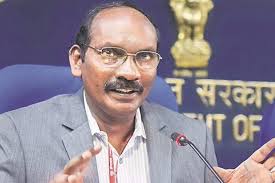Russia is offering its semi-cryogenic rocket engine technology to India under the `Make-in-India’ programme. India and Russia are discussing a wide range of cooperation in the space sector with the latter’s offer of its semi-cryogenic engine technology and critical components for India’s human space capsule.
Daily Current Affairs Quiz 2019
“We are in discussions with the Russian space agency on various aspects and nothing has been firmed up. What has been finalised is the agreement to train the Indian cosmonauts by Russia for our human space mission Gaganyaan,” Sivan told IANS in an interview here. “Russia is offering its semi-cryogenic rocket engine technology to India under the `Make-in-India’ programme. The rocket engines could be made in India and used in our rockets,” Sivan said.
In a recently statement, Russian state-run space corporation Roscosmos said the two countries will discuss cooperation in the sphere of piloted space flights, satellite navigation and engine technology. Sivan also said the two countries are also discussing the setting up of ground stations in each other’s countries to enhance the accuracy of their satellite navigation signals. “We want to set up our ground station for our NavIC system in Russia. Russia, in turn, wants to set up a ground station in India for its satellite navigation system. The Russian ground station will be in Bengaluru while ours is likely to be in Moscow,” Sivan said.
Queried about the sourcing of critical components for India’s human space mission ‘Gaganyaan’ from Russia, Sivan replied: “The discussions are on. Nothing has been finalised. We have to see whether we need to buy their components. The components have to be suitable for us.”
Sivan also said the ISRO’s focus currently is on India’s moon landing mission Chandrayaan-2. The Chandrayaan-2 spacecraft is now in the lunar orbit and ISRO will have to carry out three more orbital manoeuvres to bring it to an altitude of 100 km from the moon surface. Thereafter, the lander ‘Vikram’ will separate and will soft land on the moon’s South Pole on September 7 around 1.55 a.m.
